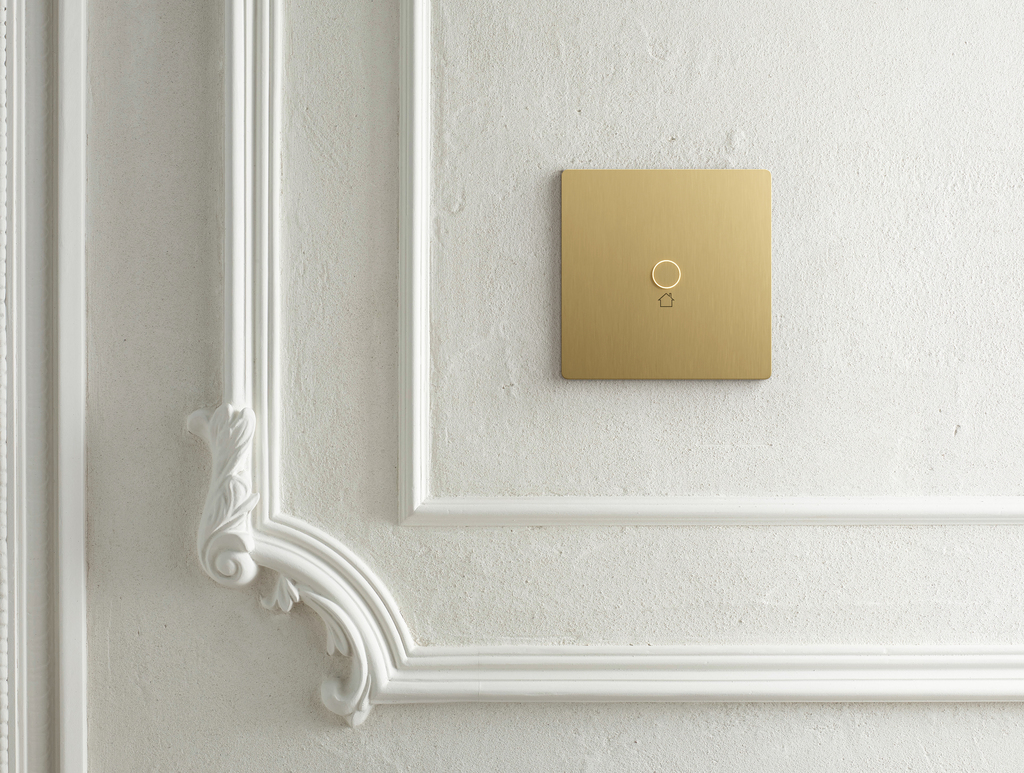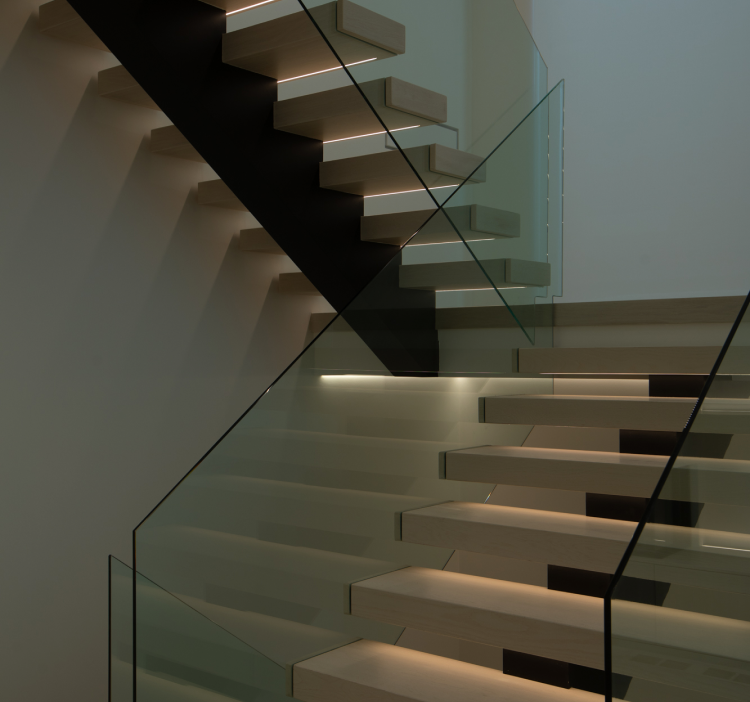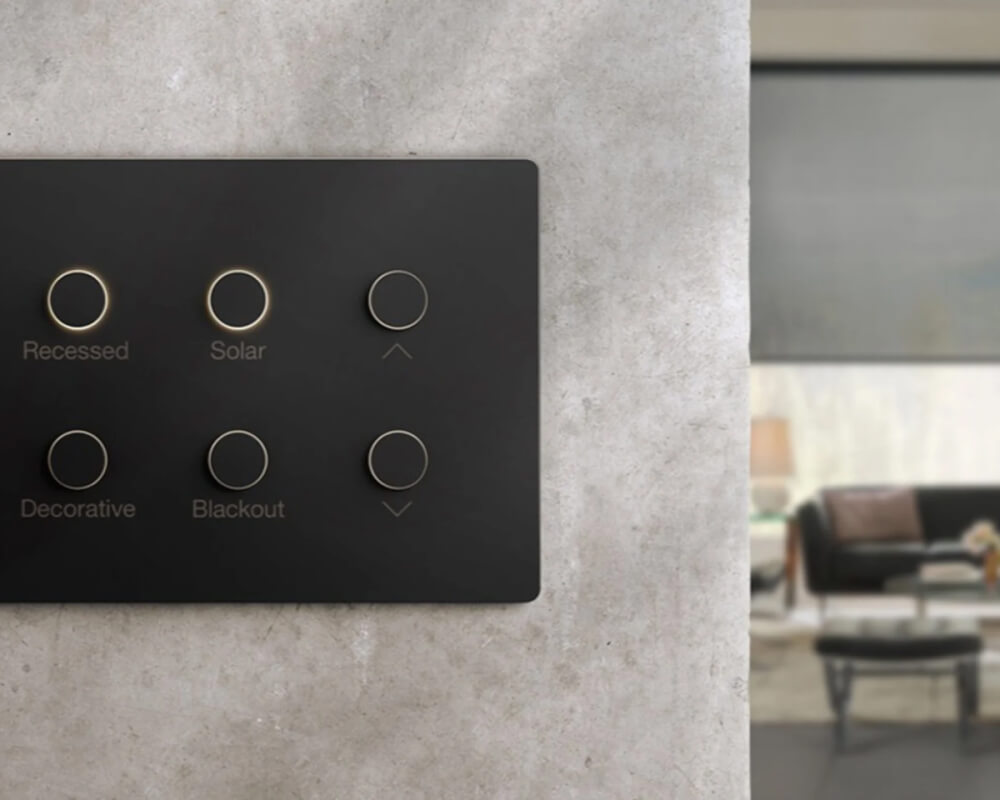Lighting Controls
Create the perfect “scene” for any room with the push of a button.
Controls explained
Visual needs
- alter space appearance;
- facilitate different functions of the room;
- control mood and atmosphere;
- reduce glare; and/or
- increase user satisfaction by providing full autonomy over the lighting.
Energy management
By reducing lighting ON time, intensity or zoning, lighting controls minimize both demand and energy consumption. According to a study conducted by the Lawrence Berkeley National Laboratory (LBNL), popular lighting control strategies generate an average energy reduction of 24-38%, resulting in a marked decrease in building operating costs.
Given the significant energy savings, most state commercial building energy codes require a wide range of controls in new constructions. In existing constructions, the controllability of LED lighting makes it an ideal pairing with controls, creating an ideal solution to minimize energy costs.
Basic Function
Lighting controls are integral to input/output devices and systems. The control system receives information, decides what to do with it, and then adjusts lighting power accordingly. Here we see a basic lighting circuit (switch leg). Power travels along the circuit to energize a group of lights, thereby illuminating a space.
Lighting control systems offer a wealth of possibilities for enhancing the user experience of a space, as well as achieving significant energy savings. Switching is the most fundamental function of lighting control, allowing power to flow to a load when the switch is turned “ON,” and interrupting the current flow when it is “OFF.” But lighting control systems can do much more than simply switch lights on and off.

Dimming
Dimming is another basic output of lighting control, which can be easily achieved via a dimmer switch. This allows for not only ON/OFF switching, but also continuous dimming of the light output, offering a greater level of nuance and control over the space.

LED Technology
LED technology provides yet another level of versatility, with the ability to adjust lighting color and correlated color temperature (CCT) with relative ease and economy. This is achieved through the use of tunable-white LED products, which permit dimming of warm- and cool-white LEDs, thus adjusting light source CCT. Further, the range of available colors can be expanded to ensure good color rendering.

Control Zoning
Control zoning represents an important aspect of lighting control system design, allowing specific control outputs to be assigned to individual light sources or groups of sources. Zoning provides superior flexibility, energy savings, and greater optimization capabilities than traditional circuit wiring. With the latest technological advances in lighting control systems, the granularity of control zoning can be as fine as individual luminaires or ballasts/drivers, allowing for zoning and rezoning through the use of a software interface rather than hardwiring. The result is a more customized, precise, and engaging user experience coupled with optimized energy efficiency.
Wired Systems
Wired lighting control systems are advanced setups that use physical wiring to connect and control various aspects of a building’s lighting. These systems allow for centralized management, automation, and customization of lighting in different areas or rooms. Wired lighting control systems offer precise control over lighting levels, schedules, and even integration with other building systems for enhanced energy efficiency, convenience, and security.
Key Components and Features of Wired Lighting Control Systems:
A central control unit or panel is the heart of the system. It serves as the main hub for programming and managing lighting settings throughout the building.
Wired systems allow for individual or group control of lighting fixtures, enabling dimming or switching lights on and off according to specific needs and preferences.
The building can be divided into zones, each with its own set of lighting controls. This allows for tailored lighting settings in different areas or rooms.
Wired control systems often include scheduling capabilities, allowing you to automate when lights turn on, off, or adjust brightness levels. This can save energy and improve comfort.
Wired systems can integrate with other building systems, such as heating, ventilation, and air conditioning (HVAC) or security systems, to create a holistic and efficient building management solution.
Sensors can be integrated into the system to detect occupancy and available natural daylight, adjusting lighting levels accordingly to optimize energy usage.
Occupants can manually override programmed settings when needed, providing flexibility in managing lighting.
Wired systems can include emergency lighting controls that activate specific lighting scenarios during power outages or emergencies.
The system often offers interfaces for users to interact with, such as wall-mounted keypads, touchscreens, or even mobile apps for remote control.
Wired systems rely on a network of wiring to connect lighting fixtures, sensors, control panels, and other components. This can include Ethernet, low-voltage wiring, or powerline communication.
While wired lighting control systems offer numerous benefits in terms of precision and reliability, they do require proper planning and installation. Professional assistance is often recommended to design and implement a wired lighting control system that meets the specific needs of a building or space. These systems are commonly found in commercial buildings, high-end residential properties, hotels, and other facilities where advanced lighting management is a priority.
Wireless Systems
Wired lighting control systems are advanced setups that use physical wiring to connect and control various aspects of a building’s lighting. These systems allow for centralized management, automation, and customization of lighting in different areas or rooms. Wired lighting control systems offer precise control over lighting levels, schedules, and even integration with other building systems for enhanced energy efficiency, convenience, and security.
Here are the Key Components and Features of Wireless Lighting Control Systems:
These systems use wireless technologies such as radio frequency (RF), Wi-Fi, Zigbee, Z-Wave, Bluetooth, or a combination of these to establish communication between lighting fixtures, sensors, and control devices.
A central control unit or hub manages and coordinates the lighting control signals. It often connects to a network and can be accessed remotely through a smartphone app or web interface.
Wireless systems allow for individual or group control of lighting fixtures, enabling dimming or switching lights on and off according to specific needs.
Just like wired systems, wireless systems enable zoning, dividing a building into different areas or rooms with separate lighting control settings.
Wireless lighting control systems can be programmed to follow schedules or respond to triggers, such as time of day, occupancy, or daylight levels. This allows for automated adjustments, saving energy and enhancing user comfort.
Sensors communicate wirelessly with the lighting fixtures, detecting occupancy and available natural daylight to adjust lighting levels accordingly.
Users can control the lighting system remotely using mobile apps, web interfaces, or handheld remotes.
Wireless systems often offer user-friendly interfaces like touchscreen keypads or mobile apps for easy programming and control.
Wireless systems can be easily expanded or reconfigured without the need for rewiring, making them suitable for spaces that may undergo changes or renovations.
By allowing precise control and automation, wireless systems contribute to energy efficiency by minimizing unnecessary lighting usage.
Wireless lighting control systems can integrate with other smart home or building automation systems, enhancing the overall control and functionality of the space.
Wireless lighting control systems are commonly found in residential homes, small to medium-sized commercial spaces, and retrofit projects. They offer the advantages of convenience, flexibility, and ease of installation compared to traditional wired systems. However, proper planning, device compatibility, and network reliability are crucial aspects to consider when implementing a wireless lighting control system to ensure seamless operation and user satisfaction.



